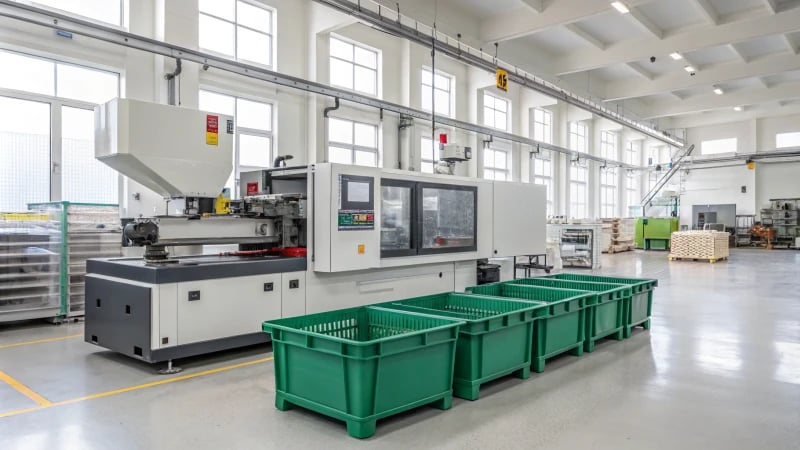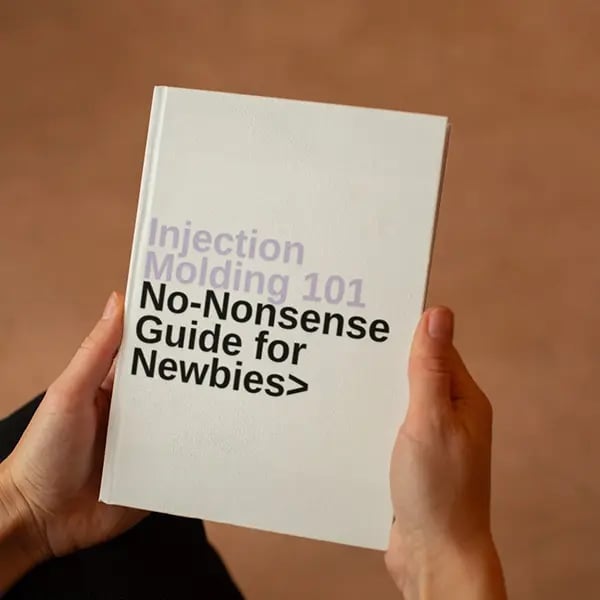
Ever wondered how cooling time in injection molding affects your final product? It’s a game-changer for efficiency and quality.
Cooling time in injection molding solidifies molten plastic, affecting cycle time, quality, and efficiency. Influenced by material, mold temperature, and part geometry, it plays a crucial role in the process.
In my early days in the industry, I remember grappling with cooling times. It felt like trying to solve a complex puzzle. But once I understood how different materials and mold temperatures played into it, things clicked. If you’re looking to master this, dive deeper into the specifics of how each variable impacts cooling time to optimize your process. Trust me, it’s worth the effort to enhance both efficiency and product quality.
Cooling time affects injection molding cycle time.True
Cooling is crucial for determining the overall cycle duration.
Material type doesn't impact cooling time in molding.False
Material properties significantly influence how quickly it cools.
- 1. How Do Different Materials Impact Cooling Time?
- 2. How Does Mold Temperature Affect Cooling Efficiency?
- 3. How Does Part Geometry Affect Cooling Time in Injection Molding?
- 4. How Can You Calculate Cooling Time for Different Materials?
- 5. How can I reduce cooling time in injection molding?
- 6. How Does Cooling Time Impact Overall Production Efficiency?
- 7. Conclusion
How Do Different Materials Impact Cooling Time?
Ever wondered why your metal spoon cools down faster than your plastic one? It all comes down to the magic of materials and their cooling times!
Material type affects cooling time due to thermal conductivity, specific heat capacity, and density. Metals cool faster than plastics because they conduct heat better, while denser materials like certain metals retain heat longer.

The Role of Thermal Conductivity
Let’s start with thermal conductivity—this is basically a material’s talent for passing heat around. Imagine you’re holding a hot cup of coffee with a metal spoon in it. That spoon gets hot pretty quickly, doesn’t it? That’s because metals, like your trusty spoon, are pros at conducting heat. They cool down fast because they can’t hold onto that heat for long. On the other hand, if you had a plastic spoon, it would stay cooler longer because plastic is not so great at this heat-passing game. In manufacturing, especially in injection molding1, we want materials that lose heat quickly to speed up production.
Specific Heat Capacity’s Impact
Specific heat capacity might sound like a mouthful, but it’s really about how much heat a material can soak up before it starts getting warmer. Imagine a summer day with two swimming pools: one filled with water and the other with sand. The sand heats up much faster because it can’t store as much heat as the water. Similarly, materials like aluminum alloys2 don’t need as much energy to get warm, which means they need careful cooling to avoid any mishaps during manufacturing.
Density and Cooling Time
Density is about how much stuff you can pack into a space. Denser materials are like packed suitcases; they hold onto heat longer. Here’s a little comparison:
| Material | Density (g/cm³) | Cooling Rate |
|---|---|---|
| Aluminum Alloy | 2.7 | Moderate |
| Stainless Steel | 8.0 | Slow |
| Polypropylene | 0.9 | Fast |
Practical Applications in Manufacturing
Understanding these properties helps me, and others in my field, pick just the right material for each job. For example, if I’m designing parts for electronics that get hot, I might go for metals that cool quickly to keep everything running smoothly. But for products that need to handle high temperatures without breaking a sweat, those heat-resistant plastics3 are the way to go.
Optimizing cooling times by choosing the right materials isn’t just about efficiency; it’s about making sure every product is the best it can be. And that’s something I strive for in every design.
Metals cool faster than plastics due to thermal conductivity.True
Metals have higher thermal conductivity, dissipating heat rapidly.
Denser materials like stainless steel have faster cooling rates.False
Denser materials store more heat, extending cooling time.
How Does Mold Temperature Affect Cooling Efficiency?
Ever wondered how just a tweak in mold temperature can make or break your production process? Let me share why it’s a game-changer.
Mold temperature plays a crucial role in cooling efficiency during injection molding by affecting heat transfer rates. Optimal temperature control can enhance cooling speed, improve product quality, and lower energy usage.

The Science Behind Mold Temperature
You know, when I first started working with mold temperatures, I didn’t realize just how much they could impact the whole process. It’s like cooking—set the oven too high, and you burn the cookies; too low, and they come out raw. Similarly, mold temperature affects how quickly heat moves from the molded part to the cooling system. A higher temperature might slow things down, making cycle times drag on. On the other hand, keeping it cooler can speed things up and cut costs, although it risks defects if you’re not careful.
Key Factors to Consider
Every time I adjust mold temperatures, I keep these factors in mind:
| Factor | Impact on Cooling |
|---|---|
| Material Type | Different materials require specific temperature settings |
| Part Thickness | Thicker parts may need higher mold temperatures for uniform cooling |
| Cooling System Design | Efficient systems can handle higher temperatures effectively |
- Material Type: Think of it like different cooking recipes needing different oven settings. Polycarbonate4 is different from polypropylene—each demands its own touch.
- Part Thickness: Thicker parts are like dense loaves of bread—if you don’t adjust the temperature just right, they won’t cool evenly.
- Cooling System Design: A well-designed system is like a good sous-chef; it helps manage higher temperatures without losing efficiency.
Balancing Temperature for Optimal Efficiency
Striking that perfect balance is an art. It took me some time, but with advanced simulation software5, I’ve managed to predict the sweet spot more often than not, sparing myself the trial and error.
Tools and Techniques for Monitoring
With the help of modern technology, I’ve found a couple of tools indispensable:
- Thermal Imaging Cameras: Like having x-ray vision for spotting hot spots and ensuring everything’s even.
- Digital Thermometers: These are my trusty sidekicks for precise control.
Conclusion and Practical Insights
Mastering mold temperature management feels like unlocking a new level of production efficiency. While there’s no magic bullet, using the right tools and techniques makes a significant difference in outcomes. It’s like getting to be an artist with science—one fine-tuning at a time—enhancing cooling efficiency6 and elevating product quality.
Higher mold temperature slows heat transfer rate.True
Higher temperatures decrease the temperature gradient, slowing heat flow.
Lower mold temperature always improves cooling efficiency.False
Too low a temperature can cause defects, negating efficiency gains.
How Does Part Geometry Affect Cooling Time in Injection Molding?
Ever wonder why some products take longer to cool than others during manufacturing? Well, it all boils down to the geometry of the parts involved!
Part geometry affects cooling time in injection molding by influencing heat dissipation, determined by thickness, surface area, and complexity, impacting cycle time and production efficiency.

The Role of Part Geometry
I remember the first time I had to design a mold for a complex part at my company. It felt like piecing together a jigsaw puzzle where every piece had its own quirks about how heat would escape. Part geometry, including dimensions, shape, and complexity, significantly impacts how heat dissipates during the cooling phase. Thicker parts retain heat longer, increasing cooling time.
Table: Impact of Geometry on Cooling Time
| Geometry Aspect | Effect on Cooling Time |
|---|---|
| Thickness | Longer cooling for thicker parts |
| Surface Area | Larger areas dissipate heat faster |
| Complexity | Complex shapes may trap heat |
Understanding Thickness and Heat Retention
I’ve found that working with thicker sections can feel like waiting for soup to cool—patience is key. Thicker parts slow down the heat transfer process, requiring more time to cool. For instance, a thick-walled container will need a longer cooling time than a thin-walled one. This often reminds me of how I need to plan my design timeline carefully to accommodate these variations.
More on part thickness7 can be explored to understand its impact.
Influence of Surface Area on Cooling
Having a larger surface area is like opening the windows wide on a hot day—it really helps with cooling. A larger surface area enhances heat dissipation as it allows more room for heat to escape. This is particularly true for flat and wide geometries that increase exposure to the cooling environment.
Learn how surface area impacts cooling8 in detail.
Complexity and Heat Distribution Challenges
In my experience, complex geometrical features like sharp edges or intricate patterns can create uneven cooling, much like trying to evenly toast bread with different thicknesses. These areas may act as heat traps, prolonging the process. Identifying such features early can help mitigate issues.
Explore complex geometry challenges9 further.
Balancing Design and Cooling Time
As designers, we often find ourselves in a tug-of-war between achieving aesthetic brilliance and ensuring functional efficiency. Balancing these elements with efficient cooling strategies is crucial. Using simulation tools can predict cooling times based on geometrical inputs and suggest optimizations.
Discover tools for cooling time simulation10 to refine designs.
By considering these factors, designers like me can optimize mold designs for efficient production without compromising on quality or aesthetics. Such insights are vital for enhancing overall production efficiency and product performance.
Thicker parts cool faster than thinner ones.False
Thicker parts retain heat longer, thus cooling slower than thinner parts.
Complex shapes can trap heat during cooling.True
Complex geometrical features may create uneven cooling, trapping heat.
How Can You Calculate Cooling Time for Different Materials?
Ever wondered why some things cool down slower than others? As a designer, understanding cooling times can make all the difference in the quality of our work.
To calculate cooling time, I focus on thermal conductivity, specific heat capacity, and thickness. The formula is: Time = (Thickness² × Density × Specific Heat) / (2 × Thermal Conductivity).

Understanding Material Properties
When I first started exploring the intricacies of material properties, it felt a bit like diving into a sea of numbers and formulas. But then, I realized each number tells a story about how a material behaves under heat. Thermal conductivity is like understanding how quickly a gossip spreads at a party—some materials just can’t keep secrets. Specific heat capacity, on the other hand, is akin to knowing how long it takes for you to cool off after a jog.
The Cooling Time Formula
This formula became my trusty sidekick when I needed to estimate how long materials take to cool. It’s surprisingly straightforward:
Time = (Thickness² × Density × Specific Heat) / (2 × Thermal Conductivity).
Of course, in real life, I tweak it based on whether I’m dealing with a complex geometry or varying conditions. It’s all about finding that sweet spot between precision and practicality.
Factors Influencing Cooling Time
- Material Thickness: I’ve noticed that thicker designs I’ve worked with always require more patience, as they hang onto heat longer.
- Initial Temperature: Starting off hot? Expect to wait longer for things to cool down—it’s like coming inside after being out in the summer sun.
- Environmental Conditions: Whether it’s a breezy workshop or a still factory floor, the environment plays its part in how quickly things cool.
- Heat Transfer Method: I’ve learned to pay attention to whether conduction, convection, or radiation is doing the heavy lifting in heat dissipation.
Tools and Calculators
When deadlines loom and I need quick answers, online tools11 have become lifesavers. These calculators handle a multitude of variables effortlessly, sparing me from manual calculations.
Practical Example: Plastic Molding
During one of my projects in plastic molding, getting the cooling time right was the difference between success and costly rework. Using the formula allowed me to design molds that ensure uniform cooling, avoiding pesky defects like warping.
Here’s a handy table of properties I’ve often referred to for common materials:
| Material | Thermal Conductivity (W/mK) | Specific Heat Capacity (J/kgK) | Density (kg/m³) |
|---|---|---|---|
| Aluminum | 205 | 897 | 2700 |
| Steel | 50 | 490 | 7850 |
| PVC Plastic | 0.19 | 900 | 1400 |
Understanding these properties has empowered me to make informed design decisions. For more detailed data, I often explore material databases12, which help refine my calculations.
Mastering these techniques not only ensures products meet the highest standards but also optimizes production efficiency—something every designer strives for.
Thicker materials cool faster than thinner ones.False
Thicker materials take longer to cool because they retain more heat.
Higher initial temperatures lead to longer cooling times.True
More time is needed to dissipate the higher amount of heat initially present.
How can I reduce cooling time in injection molding?
Remember the first time you realized just how much cooling time impacts injection molding? Let’s dive into some strategies to make those processes quicker and more efficient.
To reduce cooling time in injection molding, optimize mold design, select materials with high thermal conductivity, and implement advanced cooling channels to improve efficiency and product quality.

Optimizing Mold Design
I recall the early days of my career when I first tackled the challenge of cooling time in mold design. It was a eureka moment—realizing that a thoughtful design can drastically change the game. A well-optimized mold improves heat dissipation efficiently.
- Wall Thickness: When I started designing with uniform wall thickness, the results were instantly noticeable. Thinner walls simply cool faster, avoiding hotspots that can ruin a product.
- Material Selection: Using materials with excellent thermal conductivity was a breakthrough for me. It felt like discovering a hidden treasure that made the heat disappear more efficiently.
| Feature | Impact on Cooling Time |
|---|---|
| Uniform Walls | Reduces hotspots |
| High Conductivity | Faster heat dissipation |
Material Selection and Properties
Choosing the right materials for both the mold and the product itself is critical. I remember poring over datasheets, seeking polymers that would perform better in thermal dynamics.
- High Thermal Conductivity: Once, I switched to a metal-infused polymer and was amazed by how quickly it cooled compared to traditional plastics.
- Low Heat Capacity: This became my go-to criterion—it requires less energy to change temperature, so the cooling process speeds up.
Using thermal analysis13 tools helped make these decisions more precise and effective.
Advanced Cooling Channel Systems
When I first heard about conformal cooling, it seemed almost too good to be true. But implementing these systems, which contour to the mold’s shape, truly revolutionized our production cycles.
- Efficient Cooling: This technique maintains a uniform temperature across the mold, slashing cycle times and improving consistency.
- Reduced Warping: By preventing uneven cooling, the integrity of the product improved remarkably.
Adopting these channels wasn’t just about adding technology; it required strategic planning and design via CAD software14 to simulate outcomes before full-scale production.
Simulation and Testing
One of my mentors once told me, "Never skip testing." This advice has stuck with me through every project. Tools like Moldflow15 have been indispensable for testing various cooling strategies. By investing in simulations upfront, I’ve been able to make informed decisions that optimize cooling times without compromising on quality.
Thinner walls in mold design reduce cooling time.True
Thinner walls cool faster, reducing hotspots and improving efficiency.
High heat capacity materials reduce cooling time.False
Low heat capacity materials require less energy to change temperature.
How Does Cooling Time Impact Overall Production Efficiency?
Ever wonder how cooling time can make or break production efficiency in manufacturing? Dive in to learn how optimizing this crucial step can revolutionize your processes and boost your bottom line.
Cooling time impacts production efficiency by affecting cycle duration, energy use, and product quality. Optimizing cooling can lead to quicker cycles, cost savings, and better product resilience.

The Science Behind Cooling Time
When I first stepped into the world of manufacturing, I was amazed by how much cooling time16 mattered in injection molding. It wasn’t just about letting things cool down; it was a delicate dance of timing and precision. In essence, cooling time forms a huge part of the cycle time as molten material solidifies into the final product. Finding that sweet spot between efficient cooling and quality is critical.
| Cooling Aspect | Impact on Production Efficiency |
|---|---|
| Cycle Time | Longer cooling increases cycle duration, reducing output. |
| Energy Consumption | Extended cooling requires more energy, raising costs. |
| Product Quality | Insufficient cooling can lead to defects and compromised integrity. |
Strategies for Optimizing Cooling Time
-
Material Selection: I remember the first time I had to choose materials; I quickly learned that different materials have distinct cooling needs. Selecting those with optimal thermal properties can shave off precious minutes from cooling times without sacrificing quality.
-
Advanced Cooling Techniques: I’ve seen technologies like conformal cooling channels transform production lines by ensuring even temperature distribution and enhancing overall efficiency.
-
Simulation and Testing: Early in my career, using simulation tools17 felt like cheating. However, they turned out to be invaluable in predicting cooling patterns and fine-tuning parameters for optimal outcomes.
Practical Applications
Implementing these strategies can truly streamline production processes. I recall a project in the automotive sector where optimizing cooling times in mold design drastically reduced vehicle part production times. This not only sped up market delivery but also improved product quality.
It’s like finding the perfect rhythm—continuously monitoring and adapting the cooling phase to fit various scenarios ensures high efficiency across projects. Understanding these elements is not just about theory; it’s about transforming your production floor into a well-oiled machine that operates with precision and agility, ultimately leading to success in competitive industries.
Longer cooling time reduces production output.True
Extended cooling increases cycle duration, lowering overall output.
Advanced cooling techniques decrease energy costs.True
Efficient cooling methods reduce energy consumption, cutting costs.
Conclusion
Cooling time in injection molding is vital for efficiency and product quality, influenced by material properties, mold temperature, and part geometry. Optimizing these factors enhances production outcomes.
-
Explore the significance of thermal conductivity in optimizing injection molding processes. ↩
-
Learn about how aluminum alloys’ properties influence their cooling rates. ↩
-
Discover why heat-resistant plastics are beneficial in high-temperature environments. ↩
-
Learn how different materials, like polycarbonate, require specific temperature settings to ensure efficient cooling and high-quality finishes. ↩
-
Simulation software helps predict optimal temperature settings, reducing trial and error in achieving efficient cooling cycles. ↩
-
Explore how enhancing cooling efficiency can lead to better product quality, reduced cycle times, and energy savings. ↩
-
This link provides detailed analysis on how different thickness levels affect cooling time, helping designers optimize for efficiency. ↩
-
Explore how surface area affects cooling efficiency, offering practical insights into designing parts with optimal thermal properties. ↩
-
Understand challenges posed by complex shapes in the cooling process to better design molds for consistent quality. ↩
-
Learn about tools that simulate cooling times to help refine design processes and improve production outcomes. ↩
-
Explore online calculators that provide quick, accurate cooling time estimates for various materials, assisting in efficient project planning. ↩
-
Material databases offer comprehensive data, aiding in precise calculations and informed decision-making during design and manufacturing processes. ↩
-
Learn about top thermal analysis tools that help evaluate material suitability based on thermal conductivity and heat capacity. ↩
-
Discover effective CAD software options used for designing and simulating cooling channels in injection molds. ↩
-
Understand the advantages of using Moldflow simulation software in optimizing injection molding processes. ↩
-
Explore how cooling time affects production speed and cost, enhancing your understanding of its role in manufacturing. ↩
-
Discover tools that predict and optimize cooling time to improve manufacturing efficiency. ↩





